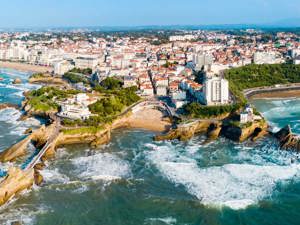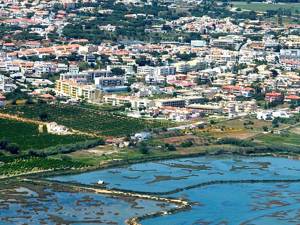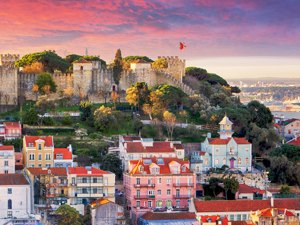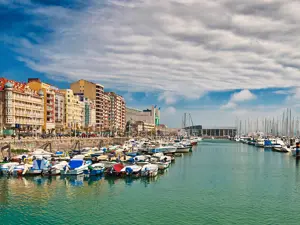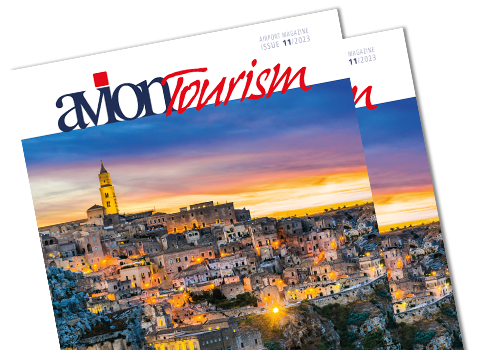The "French Rome" in the Heart of Occitania
Nîmes, located in southeastern France, is the capital of the Gard department and belongs to the Occitanie region. Strategically nestled between the Mediterranean Sea, the Camargue, Provence, and the Cevennes, it lies within a typical garrigue landscape, along the Avignon-Arles-Marseille-Montpellier axis, just a few kilometers from the famous Pont du Gard. With a population of 155,000, Nîmes is the 18th largest city in France and embodies a perfect balance of ancient history, contemporary architecture, and vibrant cultural life.
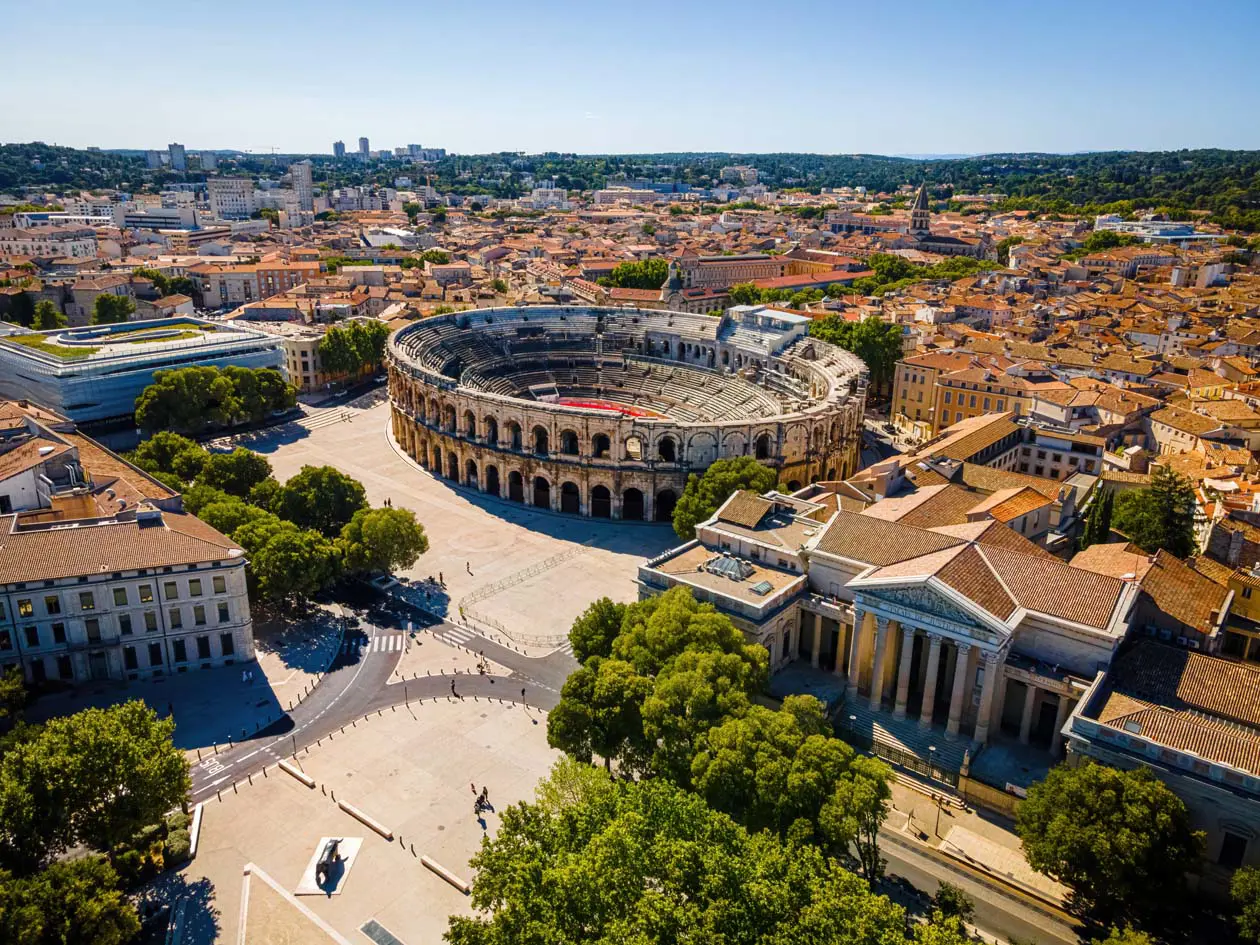
Thanks to the Mistral wind, which sweeps through the Rhône Valley keeping the skies clear most of the year, the city enjoys a particularly favorable climate. Surrounded by gentle hills and fragrant Mediterranean scrub, Nîmes offers a serene lifestyle and an ideal setting for discovering its rich historical and artistic heritage.
The History of Nîmes
The origins of Nîmes date back to the 1st century BC, when a freshwater spring attracted the Gallic tribe of the Volcae Arecomici. The city’s Latin name, Nemausus (possibly derived from a local protective deity of the spring) became its modern name. Romanization began in the 2nd century BC with the construction of the Via Domitia, linking Italy and Spain, which transformed Nîmes into a key hub of the Roman province of Gallia Narbonensis.
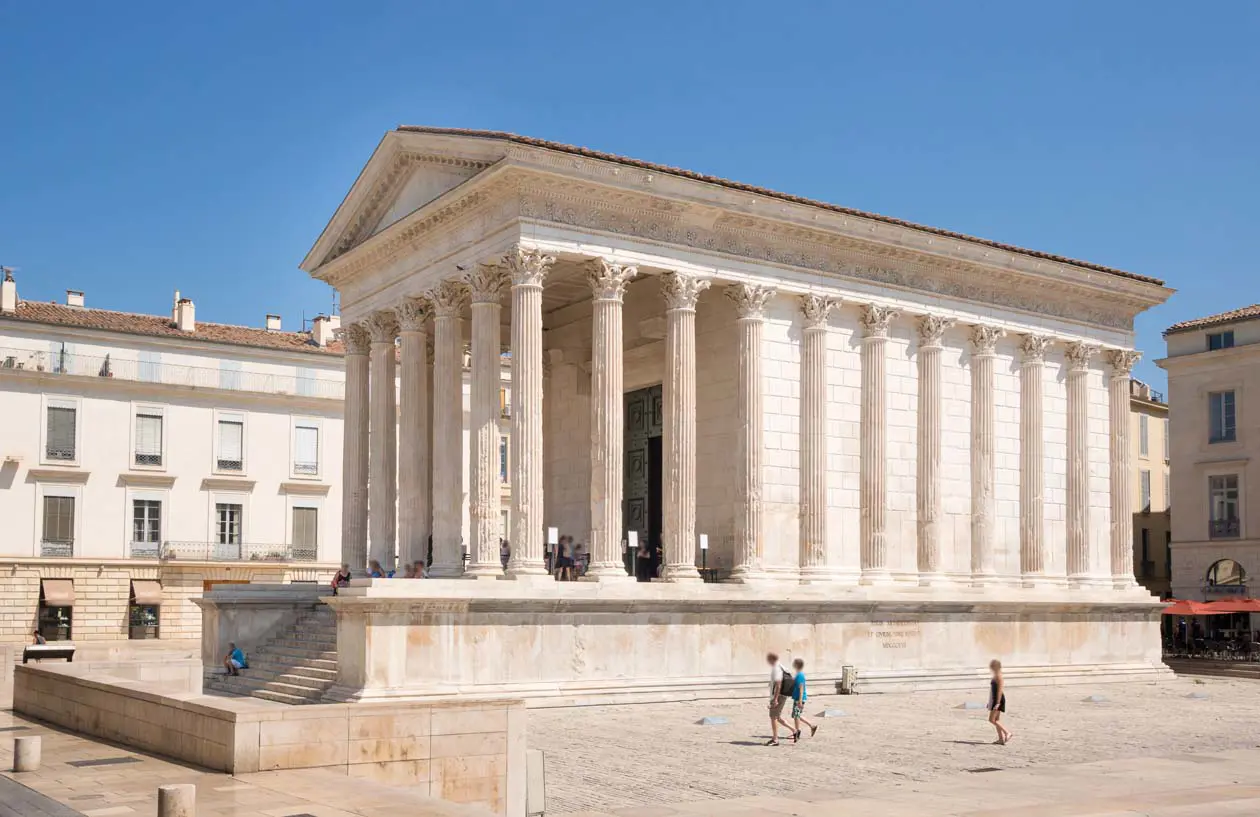
Under Emperor Augustus, the city experienced a period of remarkable urban and cultural growth. A Latin colony was established, and a massive 7-kilometer-long city wall was constructed, remnants of which include the Porta Augusta, the Porte de France, and the towering Tour Magne. At the heart of civic life stood the Forum, home to the exquisite Maison Carrée, one of the best-preserved Roman temples in the world, dedicated to Augustus’ grandsons. The city’s identity became symbolized by the "As de Nîmes," a coin featuring a chained crocodile and a palm tree, commemorating Augustus’ victory at Actium.
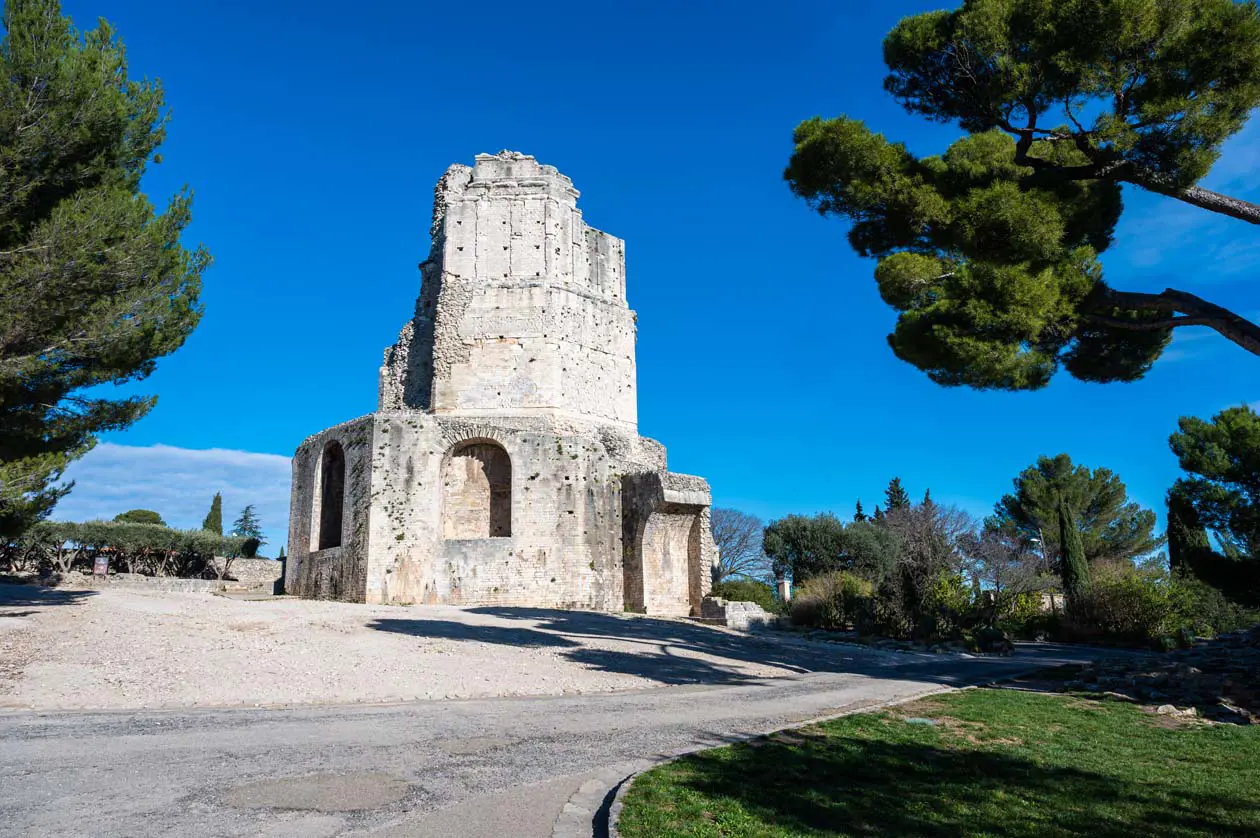
The Roman aqueduct, which includes the renowned Pont du Gard, carried water from Uzès to Nîmes, supplying fountains, baths, and private Roman homes (domus). The Arena, built at the end of the 1st century AD, is one of the best-preserved Roman amphitheatres and still hosts shows, concerts, and the Feria bullfights.
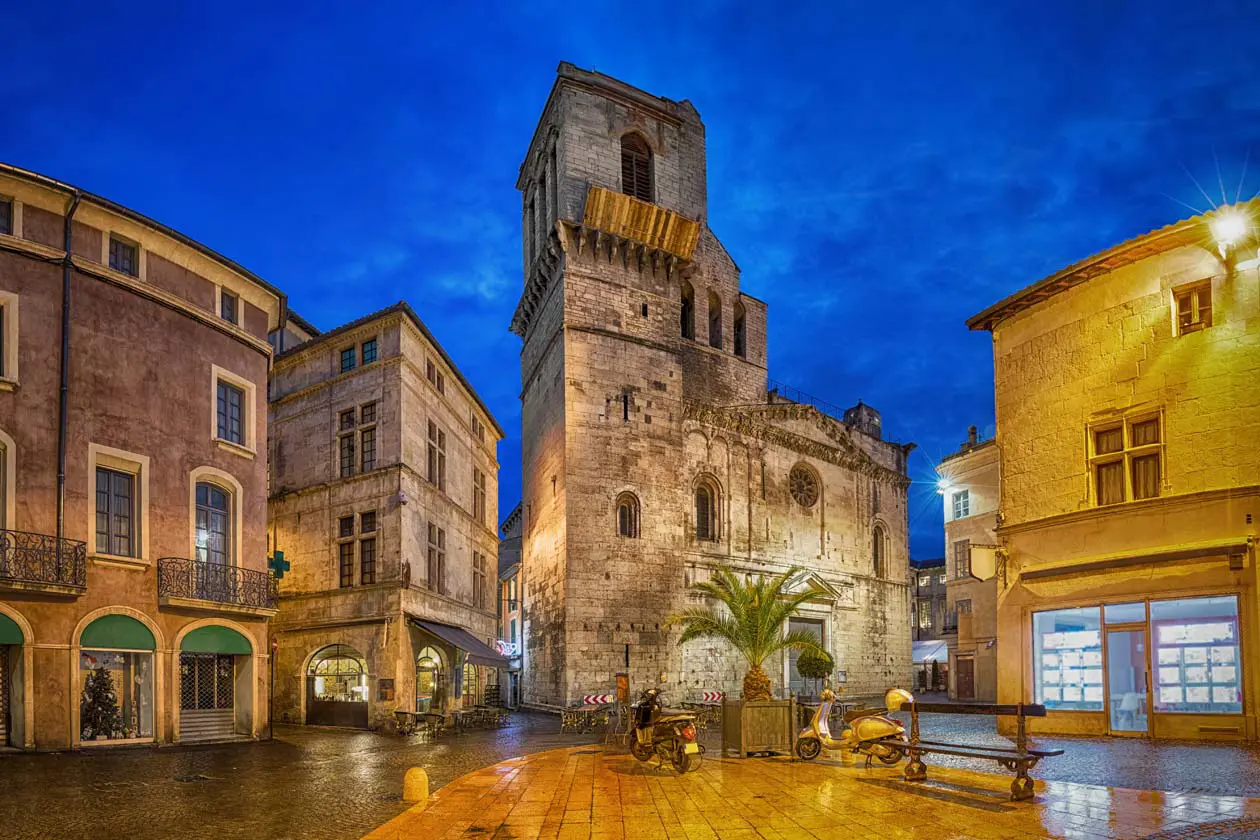
In the Middle Ages, Nîmes underwent alternating periods of occupation by the Visigoths, Saracens, and Franks. The city retreated within its most fortified structures: the Arena, repurposed as a fortress, the cathedral, and the Maison Carrée, which served as a residence. When King Francis I visited in 1533, he rekindled pride in the city’s Roman roots, and the crocodile emblem was officially adopted as its coat of arms. In the 17th and 18th centuries, Nîmes flourished thanks to the textile industry and was enriched with opulent bourgeois residences, some of which are open to the public.
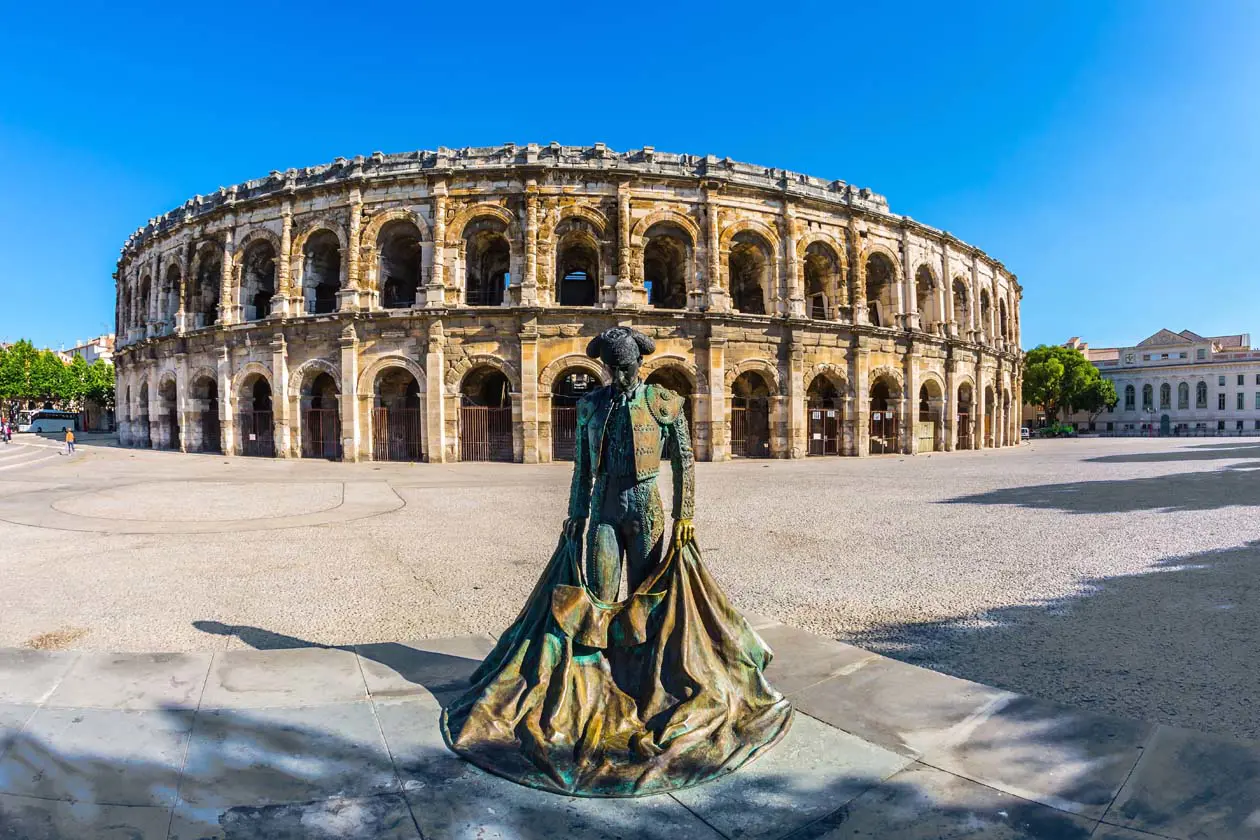
The 19th century marked another urban transformation: broad boulevards replaced ancient walls, and the railway station connected Nîmes to the rest of the country. Following the world wars, the city undertook significant restoration and enhancement of its heritage. The most iconic project was the Carré d’Art by Norman Foster, a cultural center inspired by the Maison Carrée that also houses the Museum of Contemporary Art. Opposite the Arena stands the Musée de la Romanité by Elizabeth de Portzamparc, a striking example of contemporary architecture in dialogue with antiquity.
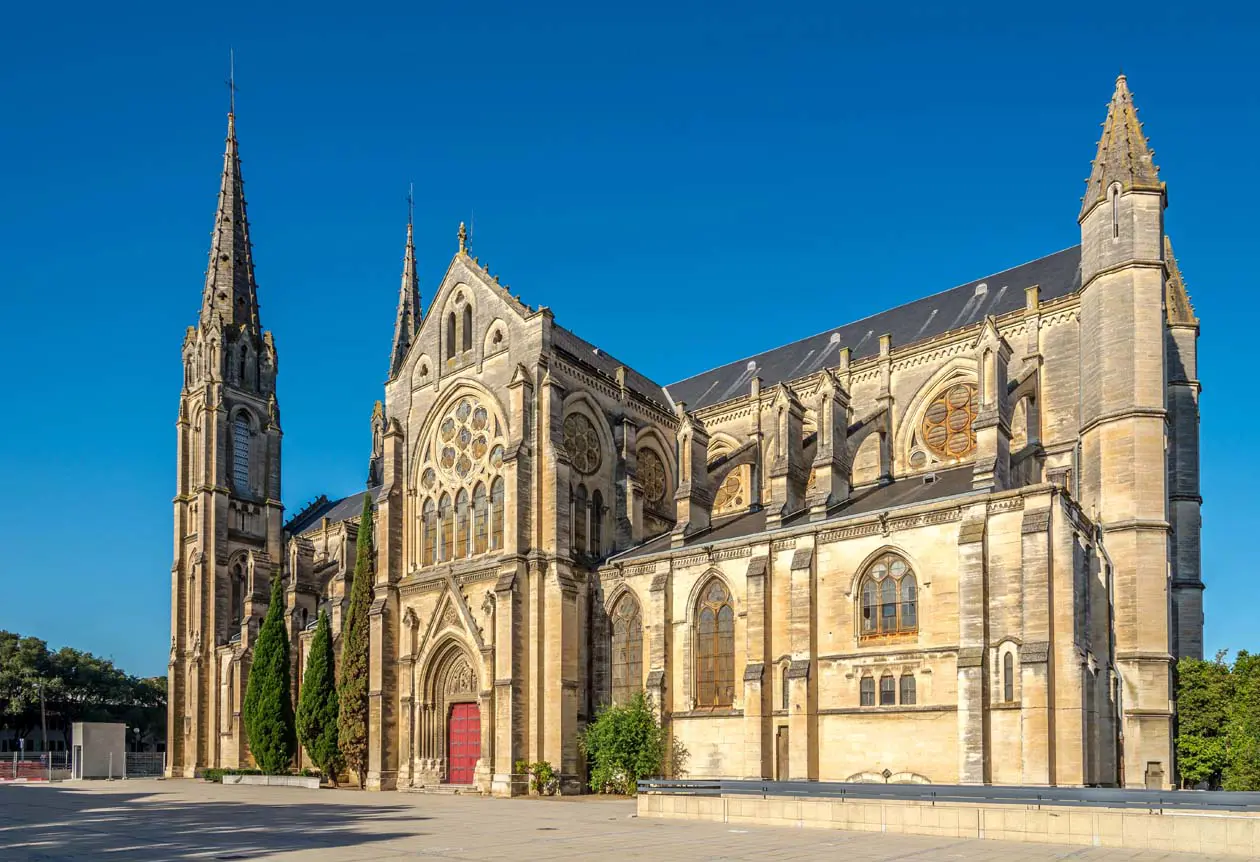
Nîmes today: where past meets present
Nîmes captivates with its unique fusion of history and modernity. Its historic center is a journey through centuries of art and architecture: Roman temples, medieval churches, Renaissance palaces, and contemporary art installations. In 2023, UNESCO recognized the Maison Carrée as a World Heritage Site, honoring it as an outstanding example of Roman religious architecture.
Another UNESCO World Heritage Site, the Pont du Gard, is a masterpiece of Roman engineering with three tiers of arches crossing the Gardon River canyon. Water from the aqueduct once flowed to Nîmes and was distributed via the Castellum Divisorium, a unique hydraulic structure in Europe, comparable only to Pompeii’s.
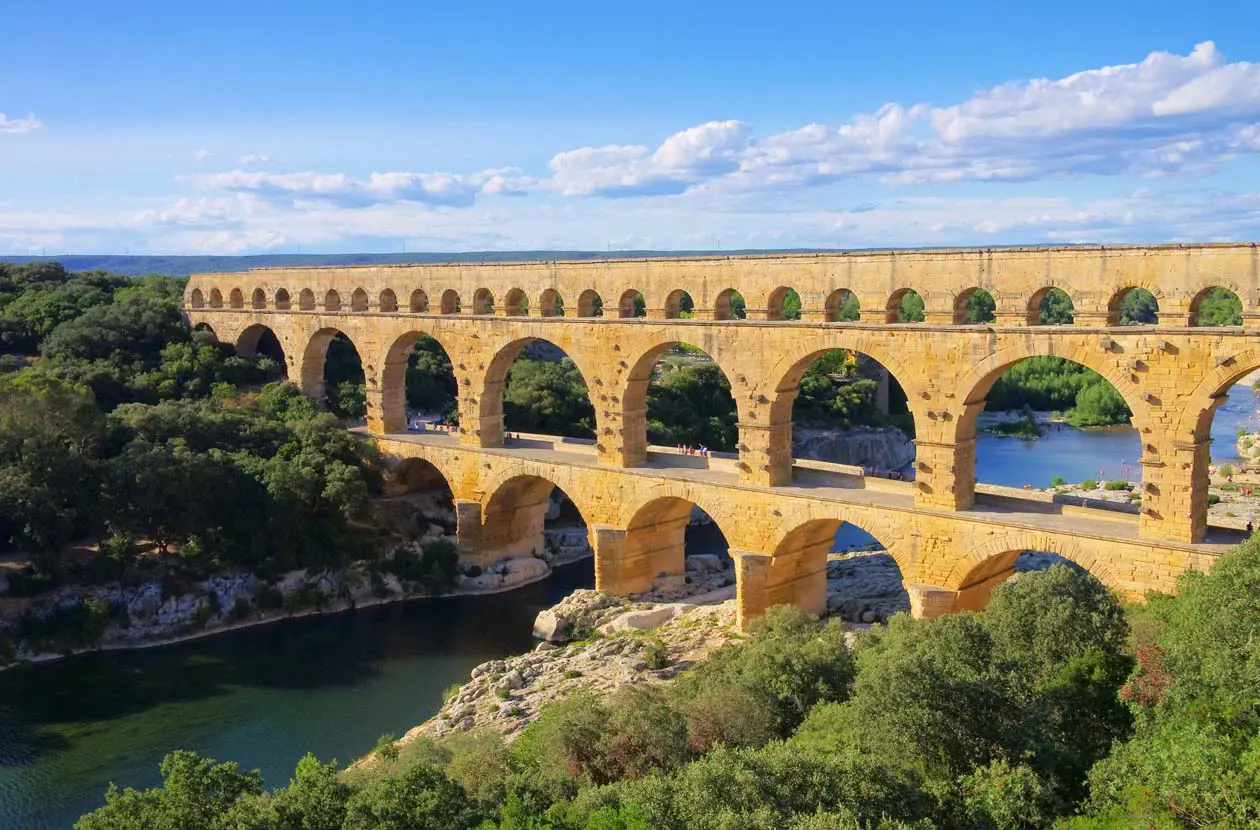
The Tour Magne, the last standing remnant of the Roman city walls, rises above the Jardins de la Fontaine, offering panoramic views. Here also lies the Temple of Diana and the first public gardens in Europe, created in the 18th century as a tribute to classical antiquity. Recognized as a "Ville d’Art et d’Histoire" since 1986, Nîmes is renowned for preserving and promoting its heritage. Its streets reveal elegant facades, hidden courtyards, baroque fountains, lively squares, and hundreds of architectural details inspired by the "As de Nîmes", reimagined even by Philippe Starck.
The artistic and cultural soul of Nîmes
Nîmes boasts a dynamic cultural scene. The Musée de la Romanité houses over 5,000 archaeological artifacts; the Musée des Beaux-Arts features masterpieces by Rubens, De Heem, Delaroche, and Boucher; the Musée du Vieux Nîmes explores daily life from the Middle Ages and the city’s textile history, including the origins of denim (serge de Nîmes); the Musée des Cultures Taurines highlights the region's bullfighting traditions; and the Muséum d’Histoire Naturelle covers geology, ethnography, and zoology. The Carré d’Art - Jean Bousquet, home to the Museum of Contemporary Art, showcases works by Merz, Penone, Richter, Polke, and more.
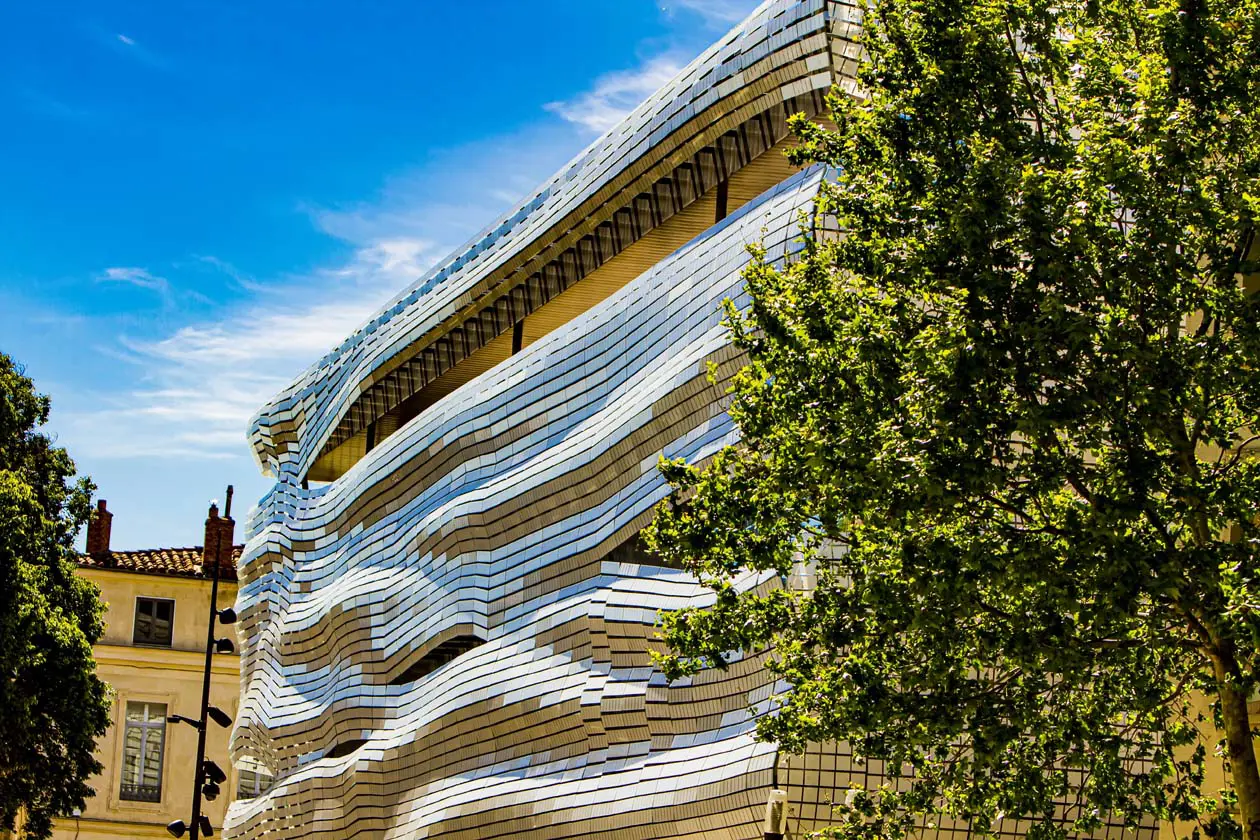
The Théâtre de Nîmes - Bernadette Lafont, located in Place de la Calade, stages innovative performances, from theatre to dance, music, and spoken word. Unmissable events include the spring and September Ferias, filling the Arena and streets with bullfights, concerts, and Camargue traditions. The Festival de Nîmes brings international stars to the stage in June and July, while the Flamenco Festival celebrates Andalusian heritage. Summer evenings come alive with Les Jeudis de Nîmes, featuring crafts, music, and tastings. Digital culture and gaming fans won’t want to miss the Nîmes Open Games Arts, an annual festival held at the Bibliothèque Carré d’Art.
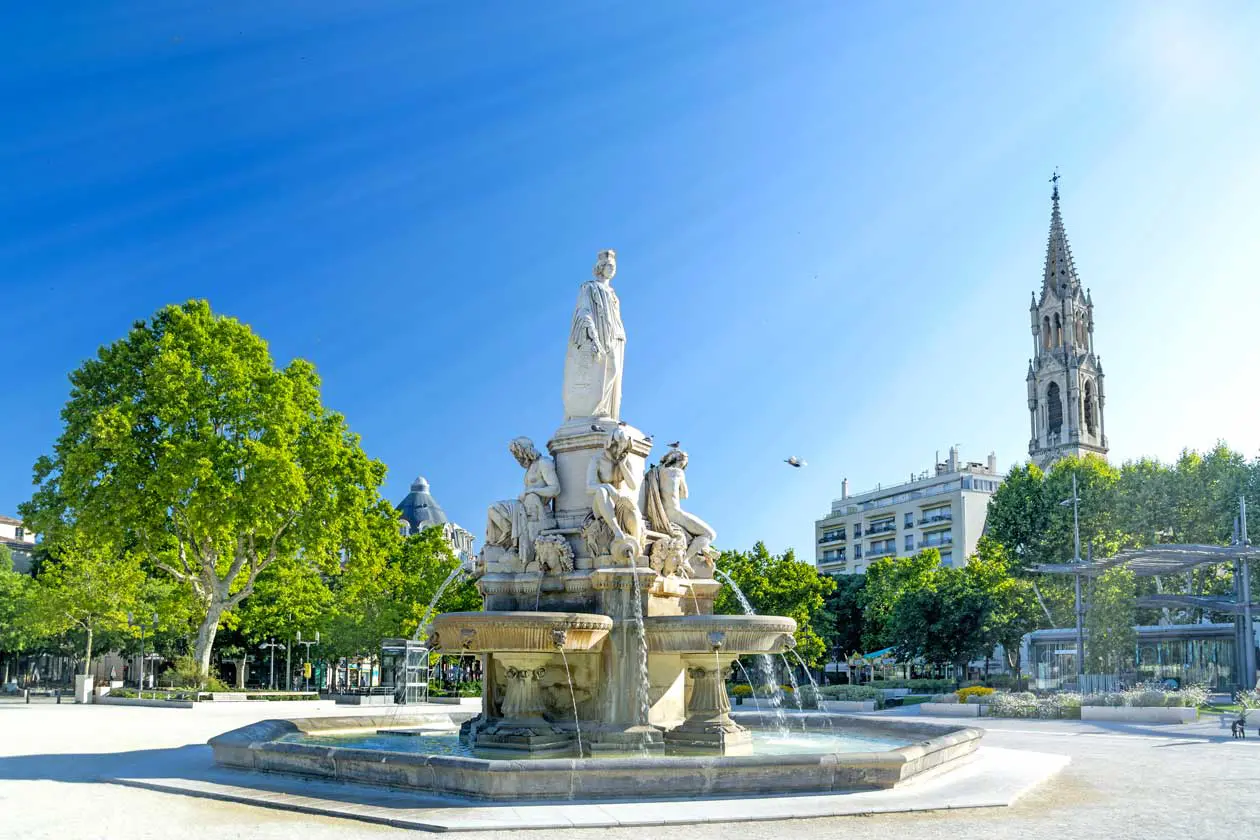
Nîmes and nature
Nîmes' natural side is expressed through its green spaces, forests, and garrigue landscapes, with hiking trails and nature walks. The Jardins de la Fontaine, Europe’s first public gardens, blend French classicism with English romanticism. Within them are the Tour Magne and Temple of Diana, enhancing their historical charm.
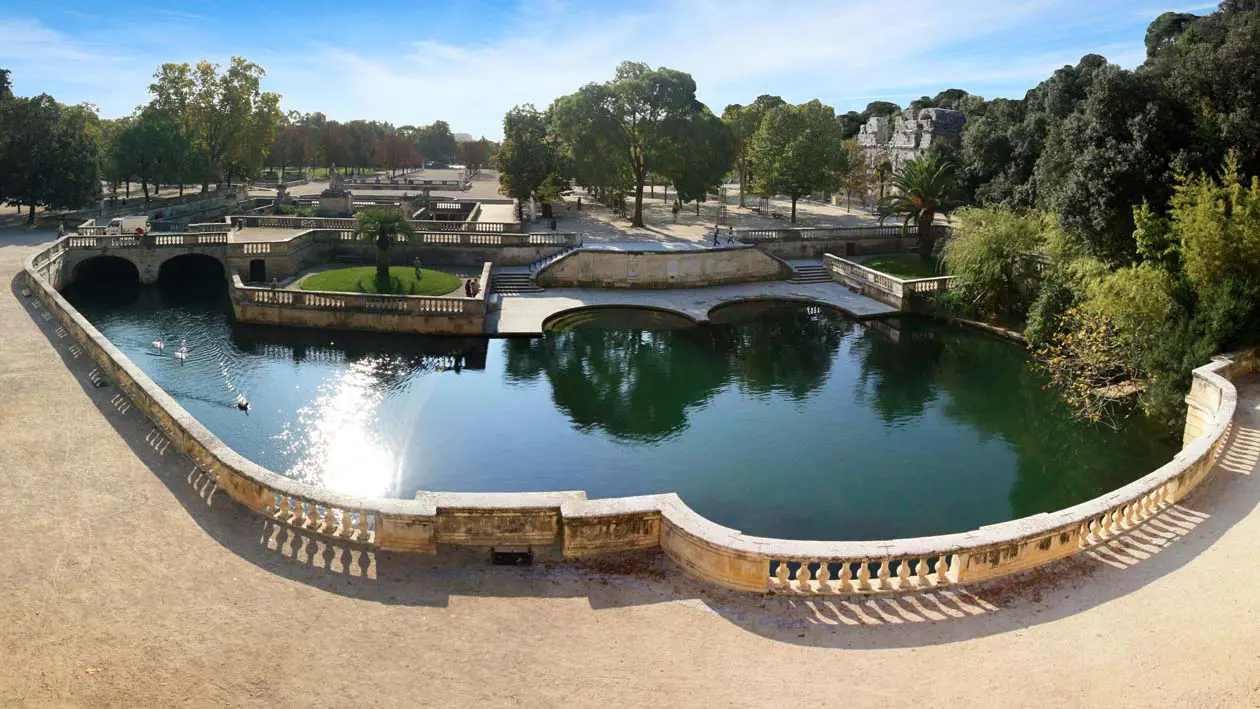
Beyond the Jardins, hiking trails stretch through the Gardon Canyon, a UNESCO Biosphere Reserve, and extend into the Petite Camargue, with marshes, salt flats, and wild nature where flamingos, bulls, and Camargue horses thrive. Outdoor activities abound: cycling along the ancient aqueduct, climbing in the Gorges du Gardon, golfing, trekking, and river cruises to the Petite Camargue. Nîmes is also on major pilgrimage routes, including the Camino de Santiago and the Regordane Way linking Le Puy-en-Velay to Saint-Gilles-du-Gard.
Flavours of Nîmes
Local cuisine reflects the region’s Mediterranean identity, with aromas of garrigue, olives, vineyards, and chestnut trees. Signature dishes include Brandade de Nîmes, a creamy blend of salt cod cooked in milk and emulsified with olive oil; the savory Petit Pâté Nîmois made with veal and pork in puff pastry; and sweet treats like the golden, crunchy Croquant Villaret and almond and honey Caladon. These delicacies pair perfectly with wines from Costières de Nîmes (produced between the Rhône and Camargue) or the famous Perrier water, bottled in nearby Vergèze.



At the heart of the city, Les Halles Market offers an authentic taste of the region (Camargue and the Cévennes) with stalls brimming with local products: AOP Nîmes olives (Picholine), Pélardon AOC cheese from the Cevennes, sweet onions, Fraise de Nîmes IGP strawberries, and the intensely fruity AOP olive oil of Nîmes.

WHERE TO GO IN NÎMES
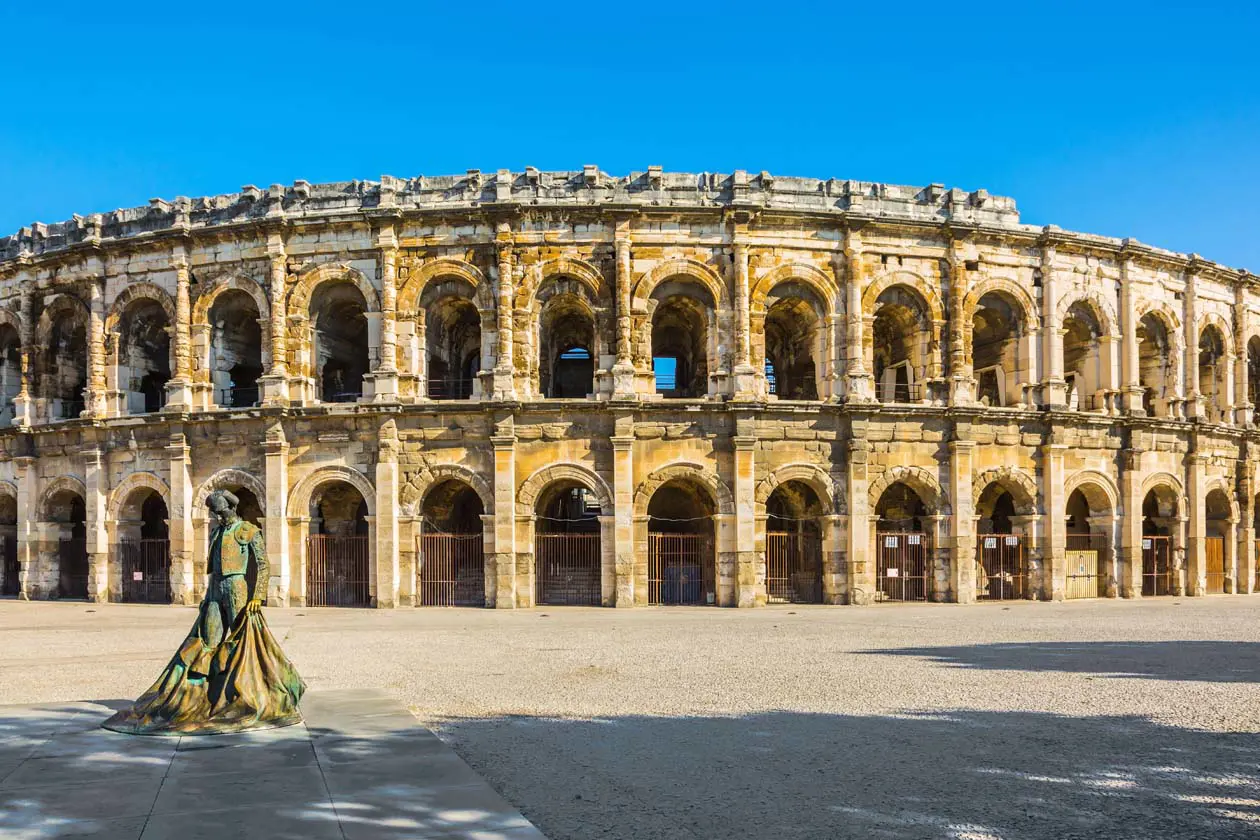
Arènes de Nîmes (Nîmes Arena)
This Roman amphitheatre, built at the end of the 1st century AD, is one of the best-preserved in the world. Nîmes reached its peak in the 2nd century AD, symbolizing imperial grandeur in Gaul. With an elliptical shape measuring 133 metres in length and 101 metres in width, the arena could hold over 20,000 spectators. Originally used for gladiator combats, it now hosts cultural events, concerts, and bullfights during local festivals.
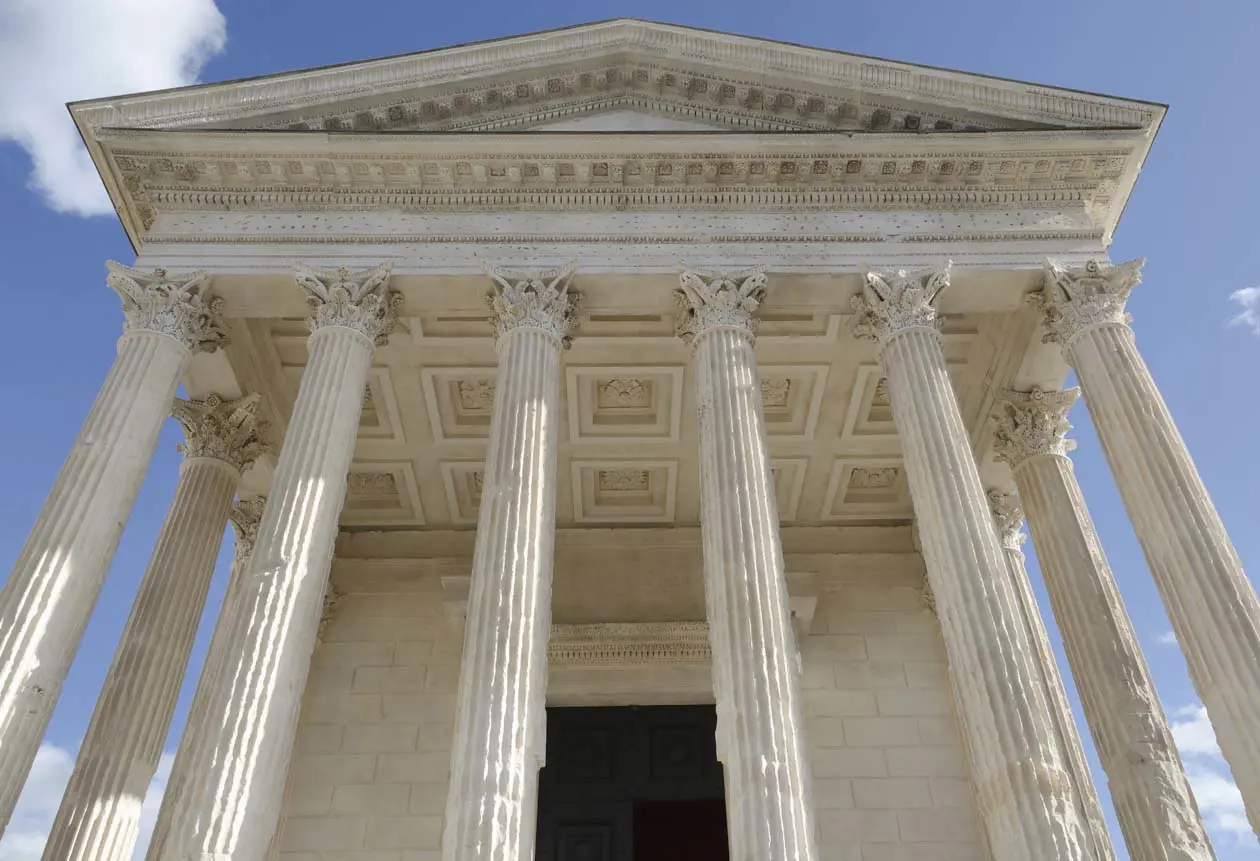
Maison Carrée
The Maison Carrée, a UNESCO World Heritage Site, is located in the heart of Nîmes. This 1st-century Roman temple was dedicated to Augustus' adopted sons, Gaius and Lucius Caesar. Measuring 26 metres long, 15 metres wide, and 17 metres high, it once stood within the Roman forum. Its elegant Corinthian columns and harmonious proportions make it one of the best-preserved Roman temples in the world. Multimedia installations inside narrate the history of the city.

Tour Magne
Situated on Mont Cavalier hill, the Tour Magne is a Roman tower that was part of Nîmes' ancient fortifications. Serving as both a watchtower and a symbol of Roman power, it rises about 32 metres and offers panoramic views over the city and surrounding landscapes, including the Cévennes, Mont Ventoux, and Pic Saint-Loup. It stands as a powerful symbol of Nîmes' Roman heritage.
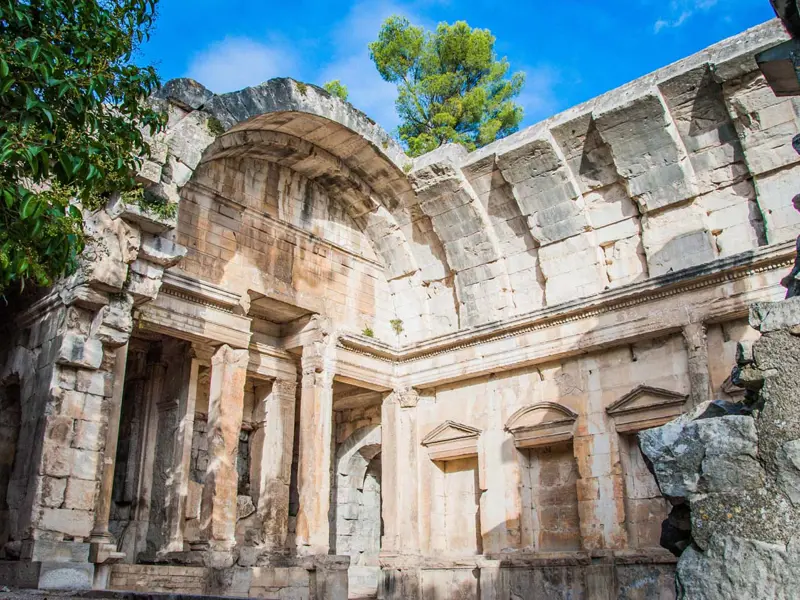
Temple of Diana
Located in the Jardins de la Fontaine, this Roman building, despite its name, may not have been dedicated to Diana, the goddess of the hunt. Its original purpose remains uncertain, but its ruins offer a fascinating glimpse into Roman architecture, set within a serene environment of vegetation and water features. A must-see site to experience Roman Nîmes.
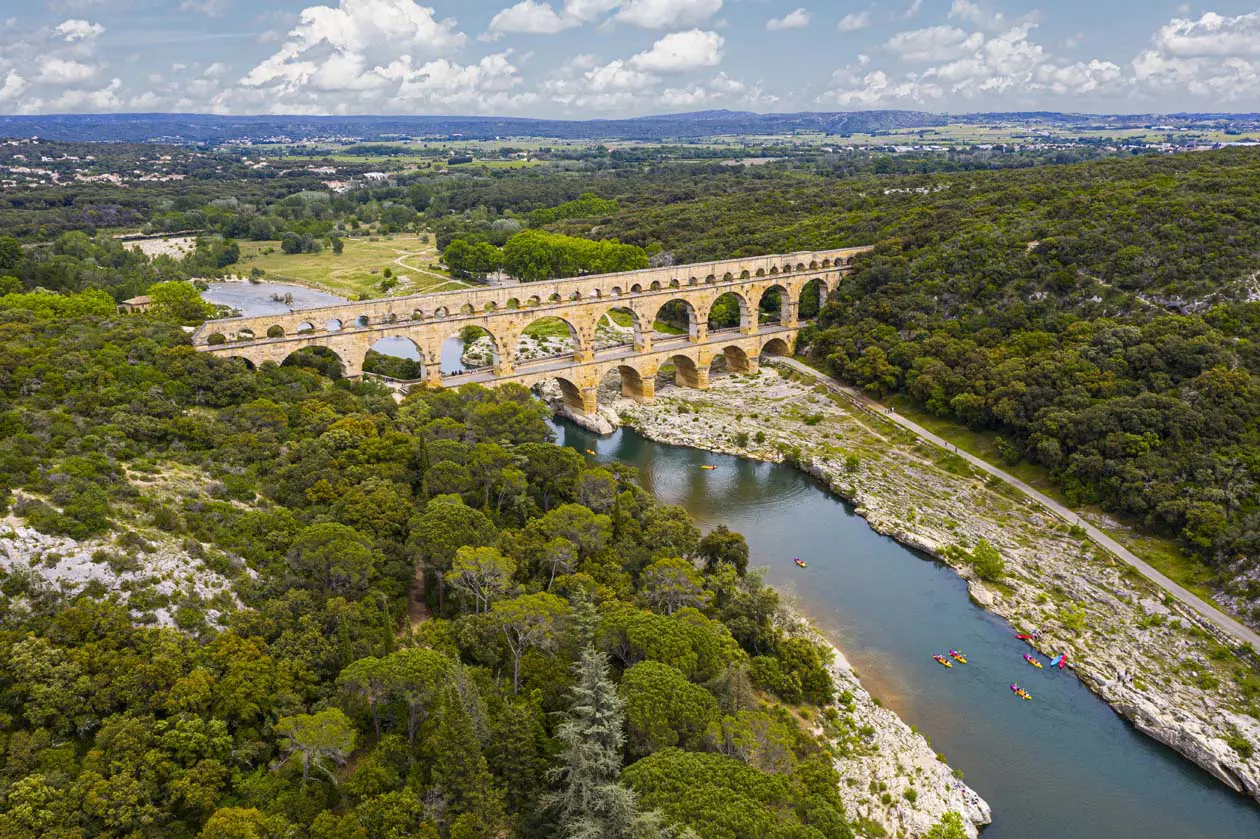
The Pont du Gard, the most iconic segment of the aqueduct built in the 1st century AD, allowed water to cross the Gardon River canyon. With its three majestic tiers of arches, reaching 49 metres in height and 275 metres in length, it is the tallest Roman structure ever built and among the best-preserved. In 1985, it was inscribed as a UNESCO World Heritage Site for its technical, historical, and artistic significance.
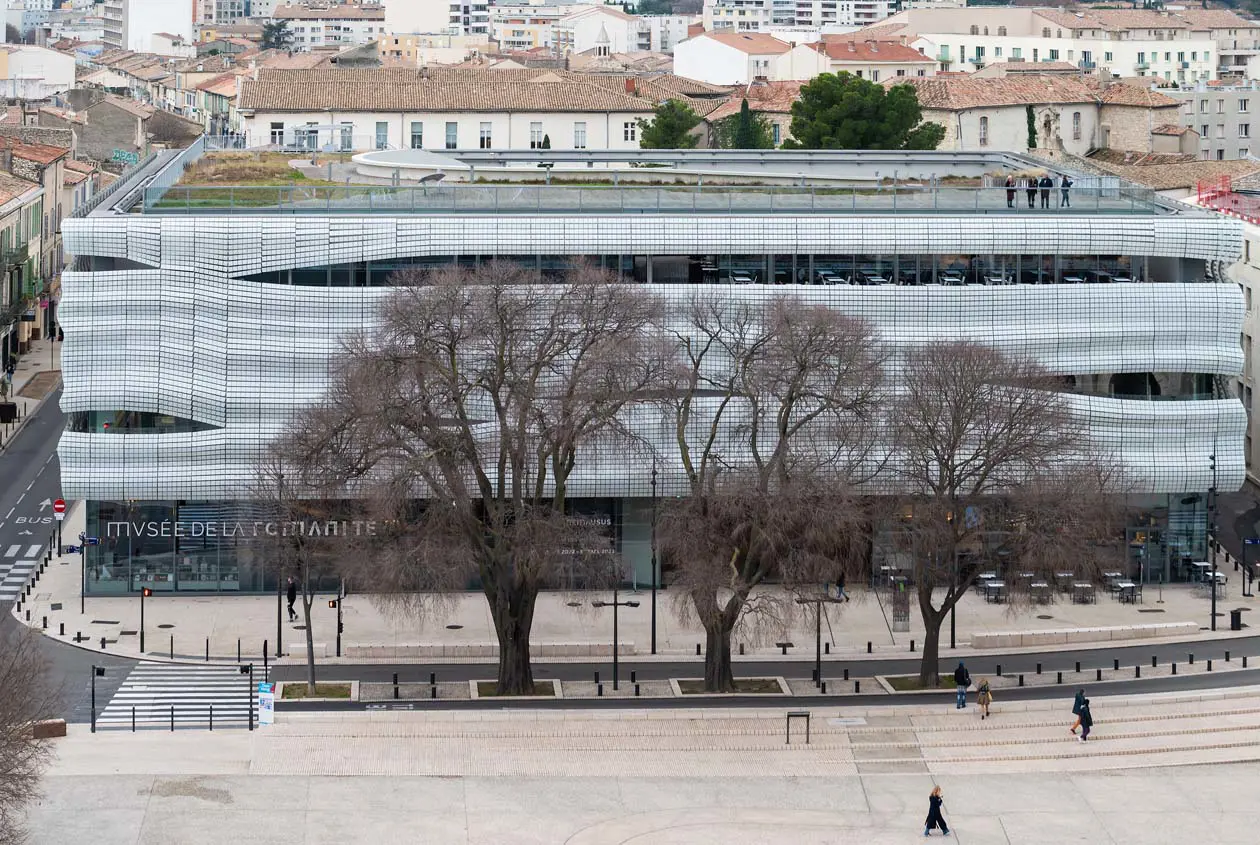
Musée de la Romanité
Opened in 2018 and designed by architect Elizabeth de Portzamparc, this ultramodern museum stands opposite the Roman Arena, blending past and present. Wrapped in a glass mosaic façade inspired by a Roman toga, it houses over 5,000 artefacts spanning 2,500 years of history. The immersive journey moves from Gallic origins to the 19th century, with 3D projections, augmented reality, and an archaeological garden. Highlights include the famed Pentheus mosaic, discovered during city excavations. The museum also features a panoramic rooftop terrace.
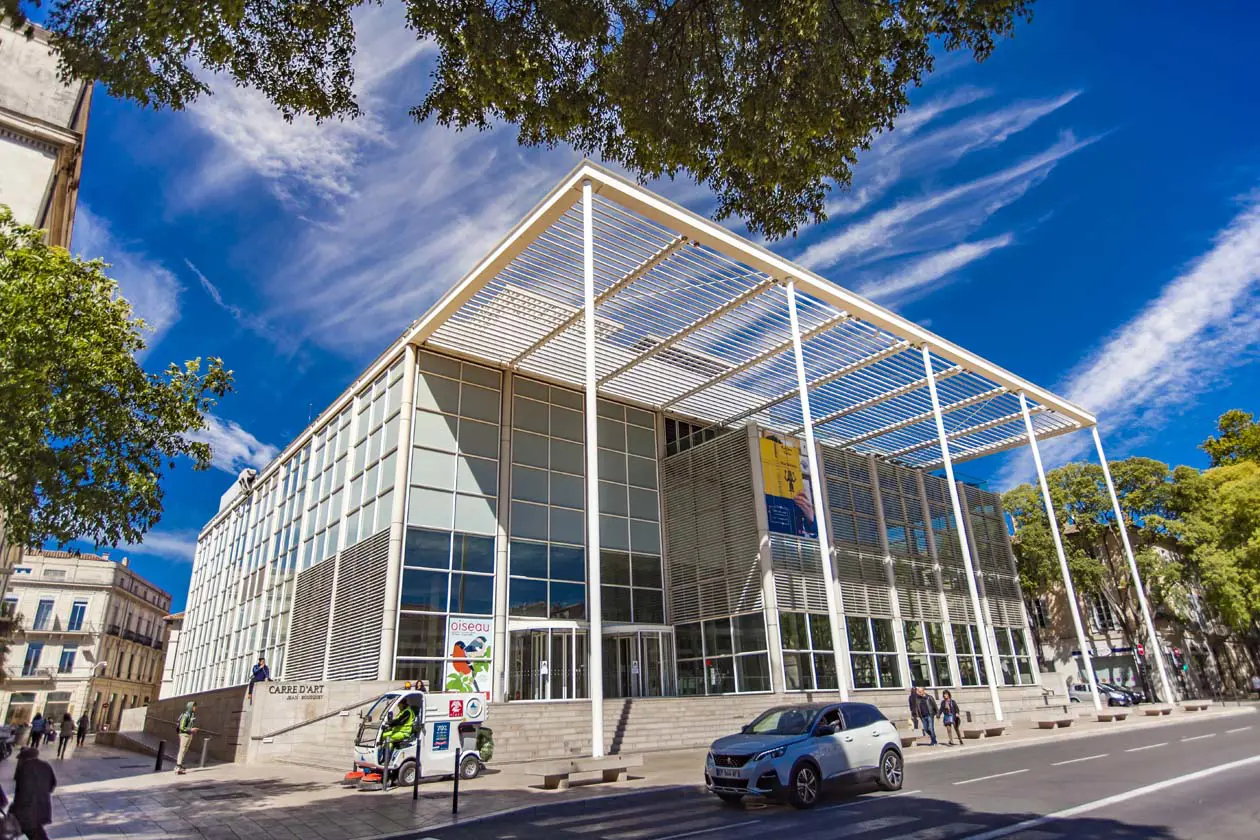
Carré d’Art - Musée d’Art Contemporain J. Bousquet
Designed by Norman Foster as a contemporary counterpart to the Maison Carrée, this glass and steel building hosts Nîmes' Contemporary Art Museum. The permanent collection comprises around 500 works from the 1960s onward, focusing on movements like Nouveau Réalisme and Supports/Surfaces. The museum features renowned artists such as Mario Merz, Giuseppe Penone, Gerhard Richter, Joseph Kosuth, and Sigmar Polke. It also includes a media library, café, bookstore, and a dynamic program of temporary exhibitions, making it a key cultural hub in southern France.

Musée des Beaux-Arts de Nîmes
Housed in a 1907 building renovated by Jean-Michel Wilmotte, the Museum of Fine Arts in Nîmes showcases 3,800 works including paintings, sculptures, and drawings. The collection spans Italian, Flemish, Dutch, and French schools. Featured artists include Rubens, De Heem, Delaroche, Boucher, Giamboni, Preti, Bramer, and Pynacker, as well as Provençal and southern French painters. It also exhibits a Roman mosaic from the imperial era depicting the "Wedding of Admetus".
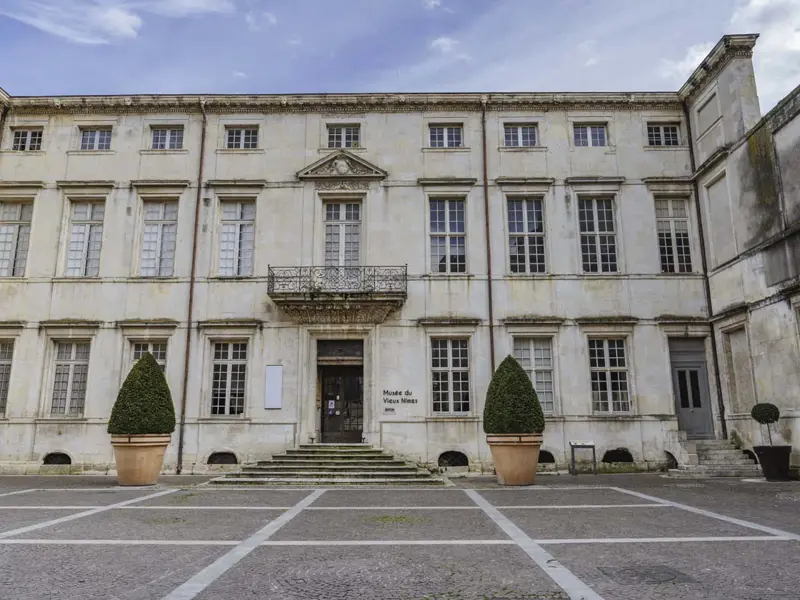
Musée du Vieux Nîmes
Located in a 17th-century former bishop's palace, the Musée du Vieux Nîmes explores everyday life in the city from the Middle Ages to the modern era. Exhibits include bourgeois furnishings, household items, costumes, historical documents, and a special section on Nîmes' textile industry. Visitors can discover the connection between "serge de Nîmes" and modern denim, with a permanent exhibition tracing its origins and evolution.
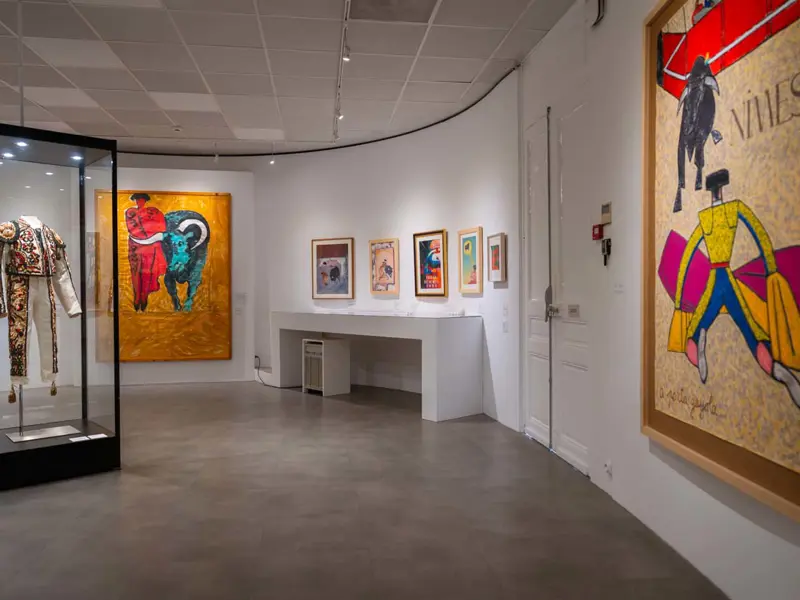
Musée des Cultures Taurines
Dedicated to the bullfighting culture of Nîmes and southern France, the Musée des Cultures Taurines - Claude & Henriette Viallat, is uniquely located near the Arena. The permanent collection focuses on bullfighting traditions from both Camargue and Spain, along with local festivals. It includes posters, costumes, trophies, photographs, and artworks inspired by bull culture. Featured artists include Picasso, Goya, and Claude Viallat. The museum also hosts temporary exhibitions.
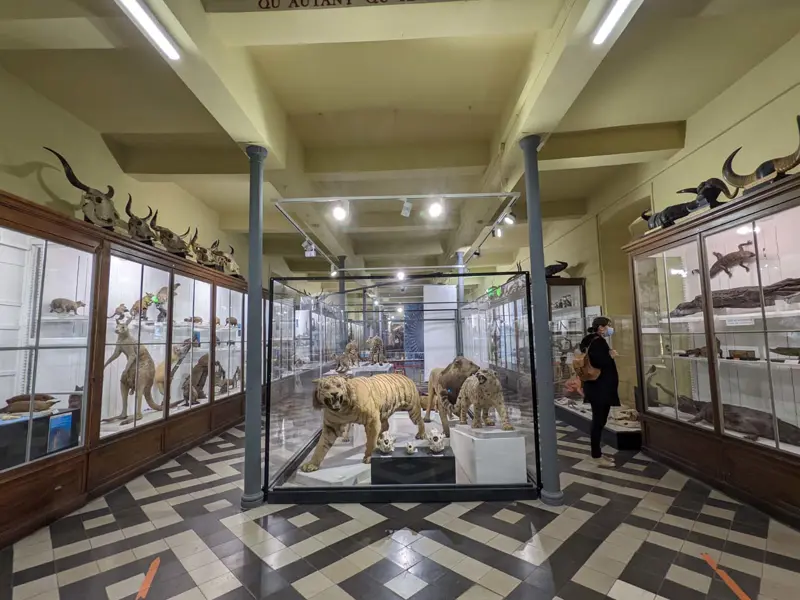
Muséum d’Histoire Naturelle de Nîmes
Opened in 1895, this is one of France's oldest natural history museums. Its collections span geology, prehistory, ethnography, and zoology. Notable items include prehistoric menhir statues, Iron Age artefacts, fossils, taxidermy, and botanical specimens. The ethnographic hall preserves its original 1930s layout, offering insights into the colonial worldview of the time. The museum provides a rich exploration of evolution and biodiversity.
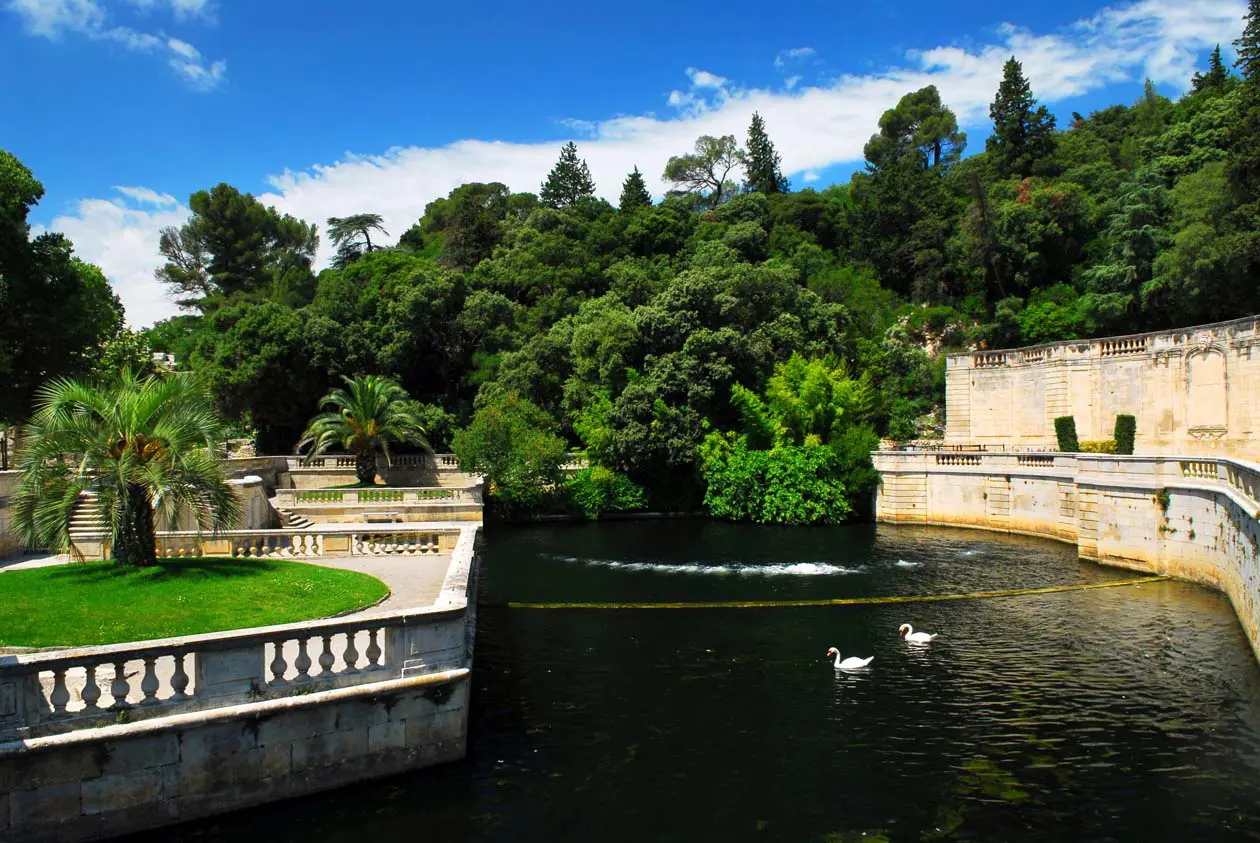
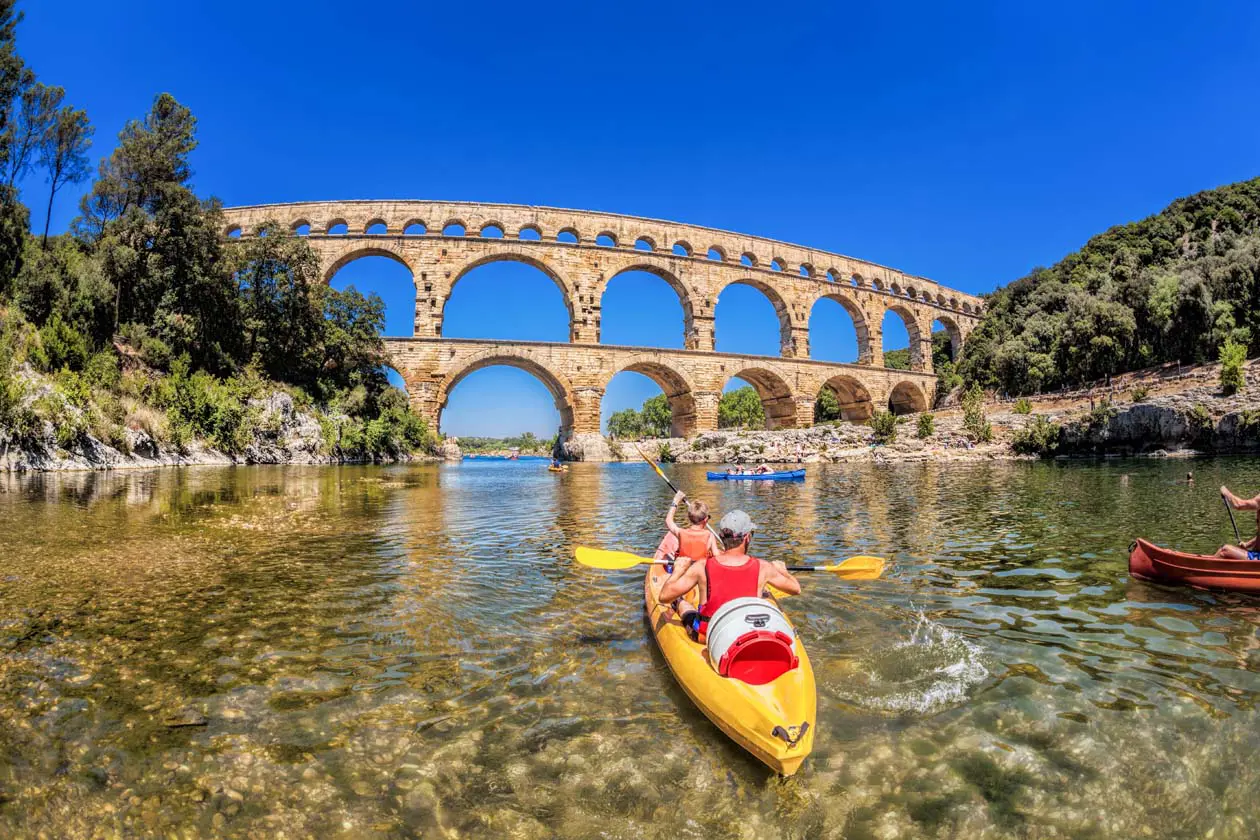
Canyon Gorges du Gardon
The Pont du Gard, a UNESCO World Heritage Site, is the most spectacular segment of the Roman aqueduct that once supplied Nîmes with water. Nearby lies the Gorges du Gardon, a 29-kilometre canyon carved by the Gardon River between the village of Dions and the Pont du Gard. This limestone gorge, a UNESCO Biosphere Reserve, features scenic trails, an interactive museum, picnic areas, and summer river bathing spots. Visitors can also walk to the village of Collias, where kayaking and rock climbing are popular. Distance from Nîmes: 25 km - approximately 30 minutes.

Petite Camargue
South of Nîmes stretches the Petite Camargue, a unique landscape of ponds, salt flats, reeds, and marshy meadows. Excursions can begin at the Scamandre Nature Reserve near Vauvert or Saint-Gilles, where wooden walkways and observation points reveal a protected habitat home to flamingos, herons, and Camargue bulls. Visitors can also tour a manade (traditional farm) to observe white horses and black bulls up close and watch demonstrations by gardians, the Camargue cowboys. An authentic dive into local heritage. Distance from Nîmes: 20-30 km - around 30-40 minutes.
Partnership with GetYourGuide
All tours and excursions



